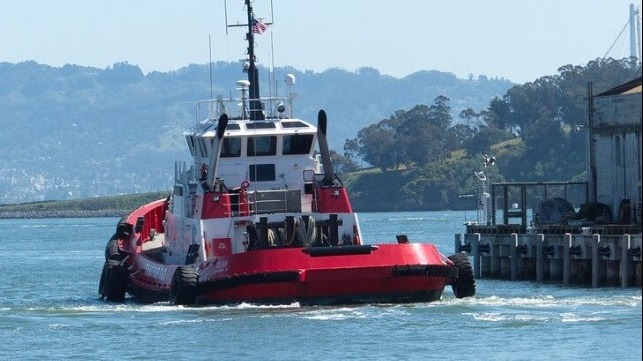California Enacts Strict New Rules on Harbor Craft Emissions

Continuing its effort to limit emissions for vessels operating in the state’s ports and near the coast, the California Air Resources Board (CARB) approved updates to its Commercial Harbor Craft Regulation designed to reduce diesel soot and nitrogen oxides emission from commercial harbor craft including tugboats and ferries. The effort follows previously adopted regulations expanding the limits for on berth emissions by containerships, car carriers, tankers, and other commercial vessels. The amendments passed on March 24 came despite objections from the commercial industry and sectors such as sportfishing.
The new amendments affect all categories of commercial harbor craft and establish the first emission standard requirements for commercial passenger fishing vessels, pilot vessels, tank barges over 400 feet, workboats, and research vessels. California had previously enacted regulations beginning in 2009 running through 2022 that sought to accelerate the move to Tier 2 and 3 engines for select categories while the new regulations expand the coverage, requiring zero-emission options where feasible, and cleaner combustion Tier 3 and 4 engines on all other vessels. In addition, they will require the use of diesel particulate filters.
“Emissions from harbor craft contribute to toxic diesel emissions from coastal and port activities,” said CARB Chair Liane Randolph announcing the adoption of the new rules. “These amendments will help clean the air and protect public health, especially in port-adjacent communities that are already burdened by high levels of air pollution.”
According to CARB, most harbor craft vessels use old engine technology such as Tier 2 engines that release 162 times more diesel particulate matter than a five-year-old school bus. Further, while the current rules required the use of cleaner engine fuel to reduce emissions, vessels were not required to upgrade to cleaner engines previously. CARB under the new requirements is proposing a performance standard cleaner than Tier 4.
The American Waterways Operators, the national advocate for the tugboat, towboat, and barge industry, issued a statement calling for CARB to reconsider the proposed changes. “AWO is deeply concerned that CARB's proposed regulations mandate engine technology that is not available and is not certified as safe by the U.S. Coast Guard; impose an infeasible compliance schedule; and vastly underestimate the cost of compliance and financial impact the requirements will have on vessel owners, especially smaller companies.” The group emphasized that tugboats, towboats, and barges are today “the greenest mode of freight transport.”
The amendments to California’s regulations will begin phasing in starting in 2023 through the end of 2032. Short-run ferries, which include those traveling less than three nautical miles over a single run, will be required to be fully zero-emission by the end of 2025. New excursion vessels, such as vessels offering whale watching or dinner cruises, are also required to be capable of operating with at least 30 percent of the power from a zero-emission source.
CARB noted that it incorporated compliance extensions for some vessel categories that would not have to upgrade until the end of 2034 if the vessel owner applies for and receives an extension. Responding to objections for the industry they also highlighted that for all vessel categories, compliance flexibility such as fleet averaging were included, and addressing concerns raised by the sportfishing industry, the board approved a one-time ten-year extension option for commercial passenger fishing vessels until 2035 if a vessel is equipped with all Tier 3 engines by the end of 2024. The board, however, also plans to establish a technical working group to provide updates every two years beginning in 2024 on the status of commercial harbor craft technology advancement that could be used to adopt more stringent zero-emission requirements in the future.
